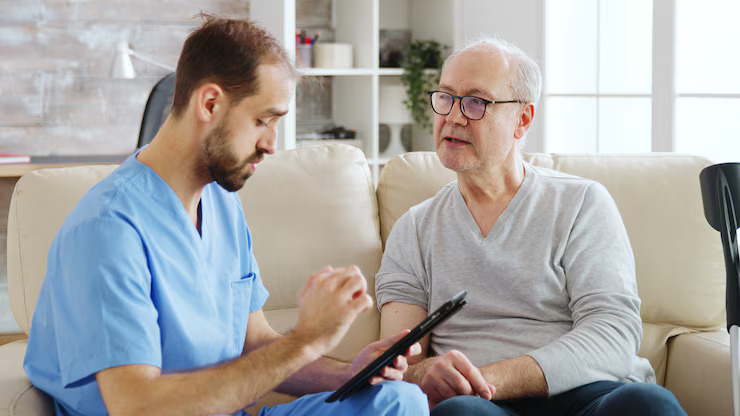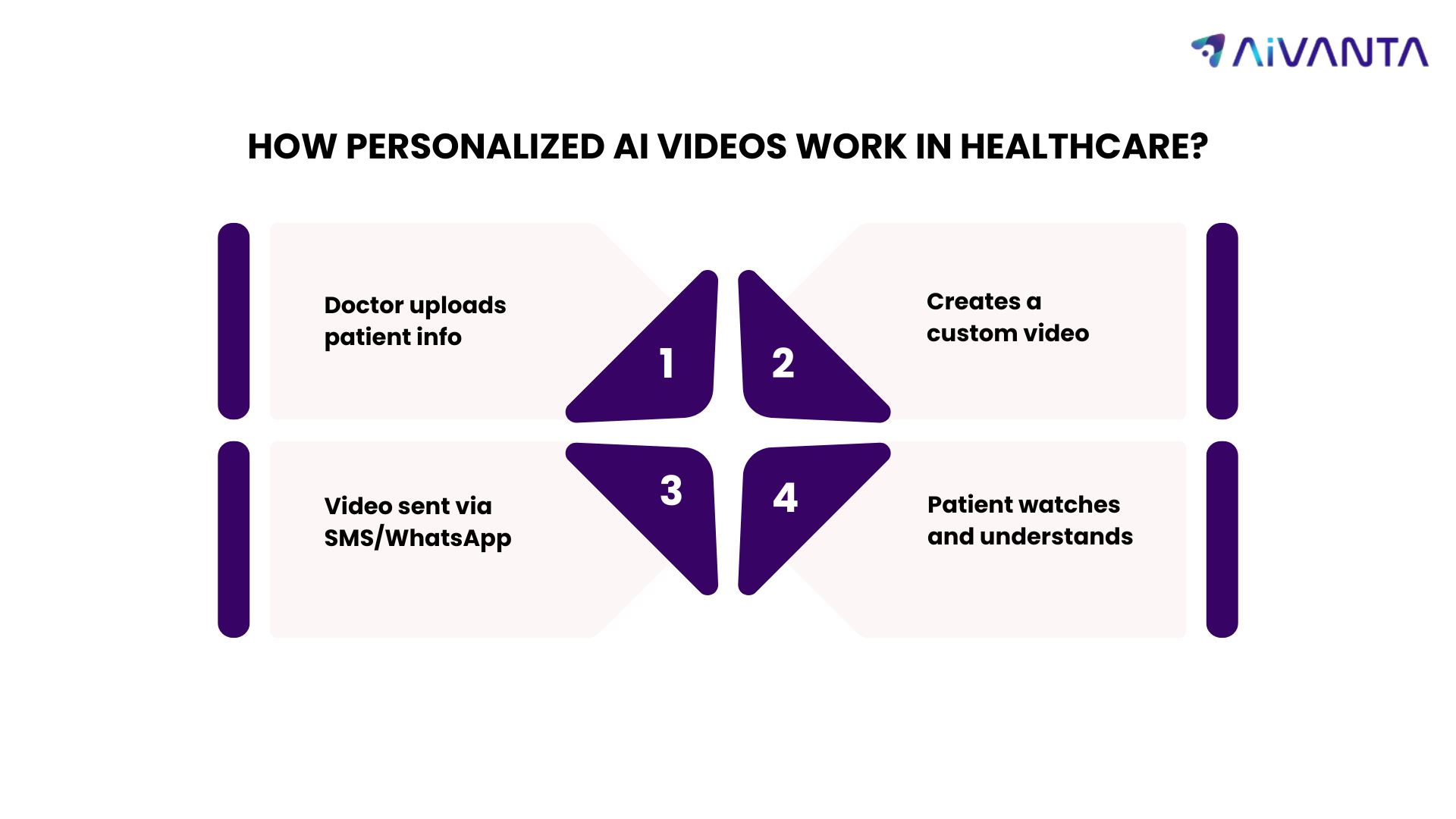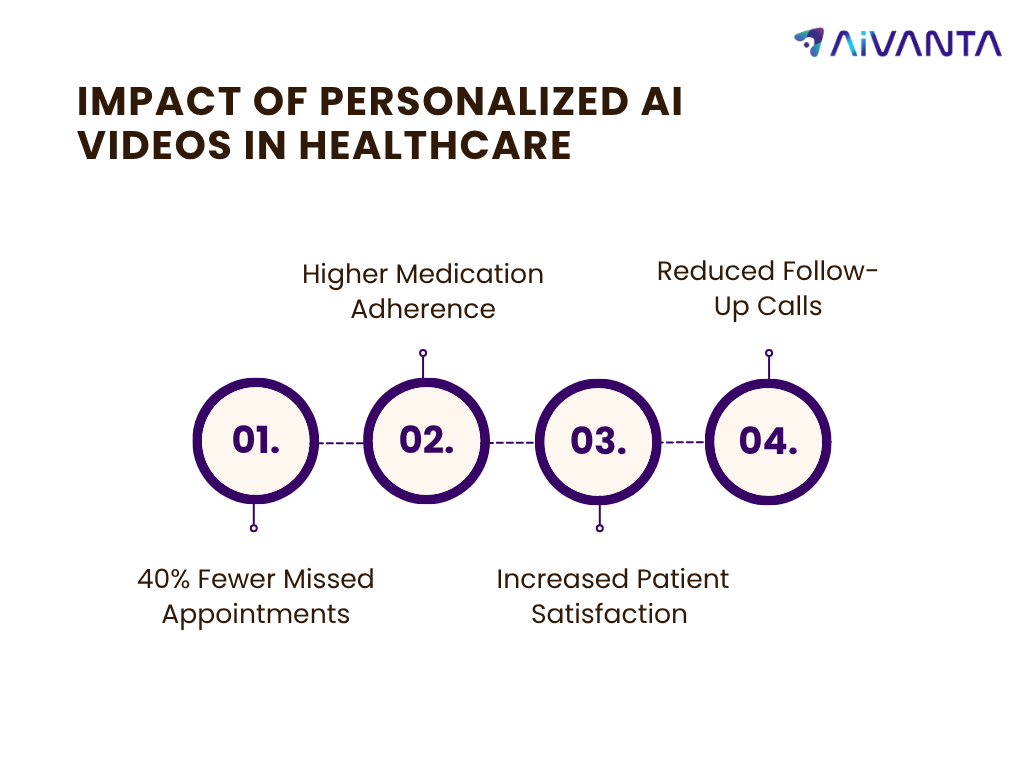
Communication in Healthcare: The Power of Personalized AI Video
Published on 2025-07-07
Nowadays, high-quality care doesn't just mean advanced medical procedures and modern hospitals; it also includes how well, quickly, and respectfully doctors and nurses communicate with their patients. Speaking is very important because it helps patients understand their condition, learn the steps in their recovery, and feel cared for throughout their journey.
Due to this, there is a high likelihood of patients receiving simple and easy to understand information to adhere to and be able to take their medication on schedule, attend their check-ups and make healthier decisions. Conversely, poor communication can lead to misunderstanding, missed appointments, or being given the wrong medication. Indeed, studies have revealed that medical errors are caused by poor communication.
Therefore, doctors and nurses need to move beyond paper leaflets and regular emails. Instead, it’s time to use personalized AI Videos, engaging ways to share information, methods that are easier for patients to understand and connect with.
The Shift Toward Digital Communication in Healthcare
When individuals have smartphones, digital tools are the most suitable method to improve communication in healthcare. Hospitals are now using tailored videos to communicate on treatments, test results, and reminders on visitations. These tools allow access to a smoother and interactive experience.
Additionally, it enables different hospitals to work more efficiently. Regardless of whether one is under long term or emergency care these tools ensure that all parts of the system can speak to one another with ease.
How Personalized AI Videos Improve Communication?
Imagine, receiving a video from your doctor using your name, explaining your test results, and even speaking your language. This is because of personalized AI video. These custom videos transform complex medical information into simple messages just for you.
1. Making Videos That Speak Directly to Each Patient
Custom AI videos are tailored to meet each person’s needs. They may describe a treatment procedure, tell you how to take care of yourself once you are done or give health tips, using visuals and language that feel personal. Consequently, this helps make patients more relaxed and comprehended.
Additionally, these videos could also be recorded in multiple languages which is essential in multilingual communities. The personal touch makes the message clearer and avoids confusion about necessary health steps.

2. Better Understanding Means Better Outcomes
When patients fully understand what their doctor is saying, they are more likely to follow medical advice. One can recall essential procedures with the help of a personal video which comes in handy during a stressful period such as preparing to undergo an operation or leaving the hospital. Moreover, these videos also help patients form smarter questions the next time they get to see the doctor. This two-way information enhances care and ensures that everybody is working towards the same health objectives.
Why Is Video Engagement So Powerful in Healthcare?
We are all aware that a personalized AI video is more engaging and less complex than reading a lengthy paper. Therefore, video usage in the healthcare industry clarifies everything better, particularly, those who would hardly understand medical terms.
1. Videos Increase Attention and Recall
During a doctor visit, patients do not recall as much as 80 percent of what the physician tells them. However, with a tailored video, they are able to view it as many times as they wish. It makes them less concerned, more certain and willing to participate in the care plan. In fact, studies reveal that video engagement facilitates comprehension by breaking down complex subjects into easily observable segments. The videos are beneficial to various learners hence, simplifying the message to everyone.
2. Using Video Across the Patient Journey
Doctors now use videos for appointment reminders, home care instructions, and welcome messages for new patients. This implies that video can be applied at all points of the patient journey, making everything more familiar and easier. Video messages from the medical team in a severe situation, such as a major surgery or long-term care provide comfort and definite answers, which may not be provided in written papers.
How AI Makes Communication More Scalable and Efficient?
One significant challenge in healthcare is reaching thousands of patients without facilitating comprehension by breaking down complex subjects into easily observable segments.. That’s where AI-powered solutions help. With automation, hospitals can quickly send personalized videos.
1. Reaching More Patients with Less Effort
AI can use patient records to automatically create videos. As an example, when a patient misses check-up, the system can initiate sending a video reminder on the health tips. It saves time for the doctors and keeps the patient posted. Moreover, such automation doesn’t save time, but also money, since it eliminates paperwork and helps patients keep appointments. Follow-ups don’t have to occupy the staff as much because they can invest their time in giving actual care.
2. Keeping Communication Consistent
As hospitals grow larger, it becomes increasingly challenging to maintain strong communication. To solve this, scalable AI solutions make sure each patient gets the same clear message, regardless of the hospital. Sending the same message to everyone keeps things safe, builds trust in the hospital brand, and reduces the likelihood of mixed-up messages.
The Role of AI Marketing Automation in Healthcare
You may think marketing is just for stores, but in healthcare, it means helping patients stay connected and informed. AI Marketing Automation builds smart systems that guide patients through their health steps.
1. Smart Workflows for Better Timing
Patients receive timely advice and updates based on their condition. For instance, a person with diabetes gets a nutrition video, while someone recovering from surgery could receive a weekly recovery guide. In this way, these plans send the right message at the right time. They adjust based on what the patient does, helping prevent information overload.
2. Measuring and Improving Communication
It monitors how the patients react, e.g., whether they watch the video, click on a link, and make a reservation. Consequently, this feedback assists hospitals to improve their videos and make them more helpful. Also, continuous feedback is used to ensure that hospitals continue to improve their communication with patients as well as their messages.
Impact of Personalized AI Videos in Healthcare
Hospitals using personal videos have seen big changes:

Clearly, these results demonstrate that clear communication is not just helpful, but a necessity in today’s healthcare. Moreover, personalized AI video helps caregivers and family understand the plan. When everyone is aligned, the quality of support improves, leading to better outcomes for the patient.
What Makes Patients Connect with Personalized Videos?
Patients report feeling more valued and understood when they get messages made just for them. They also enjoy being able to watch these videos at their convenience, with messages that speak to their specific needs. When patients share the videos with their family, it helps everyone know what’s going on. Together, sharing the same understanding lowers stress and brings families closer in the care process, which is very important in long or complex treatments.
What’s Holding Back Adoption, And How to Fix It?
Some hospitals worry about costs, staff training, or whether patients can use the tech. However, custom AI videos are made to be simple and powerful. Work on phones, tablets, or computers. Even better, they don’t need any extra apps, and the content can be shared by SMS or WhatsApp. Even patients in remote areas can watch the videos, they don’t need fast internet or new phones.
The best to follow all big healthcare privacy rules. They include secure video storage, consent tools, and control over who can see what. So hospitals can use video safely, knowing patient data is protected at every point.
Conclusion
Good communication helps improve results, build trust, and keep patients involved. With the help of personalized AI videos, hospitals can build systems that speak clearly and with care. In short, these videos enhance education, foster stronger patient relationships, and ultimately lead to improved treatment outcomes. Once there is an improvement in communication, healthcare also improves.
Curious how it works? Request a demo and learn how AiVANTA is helping hospitals to convert communication into something that patients understand and remember.